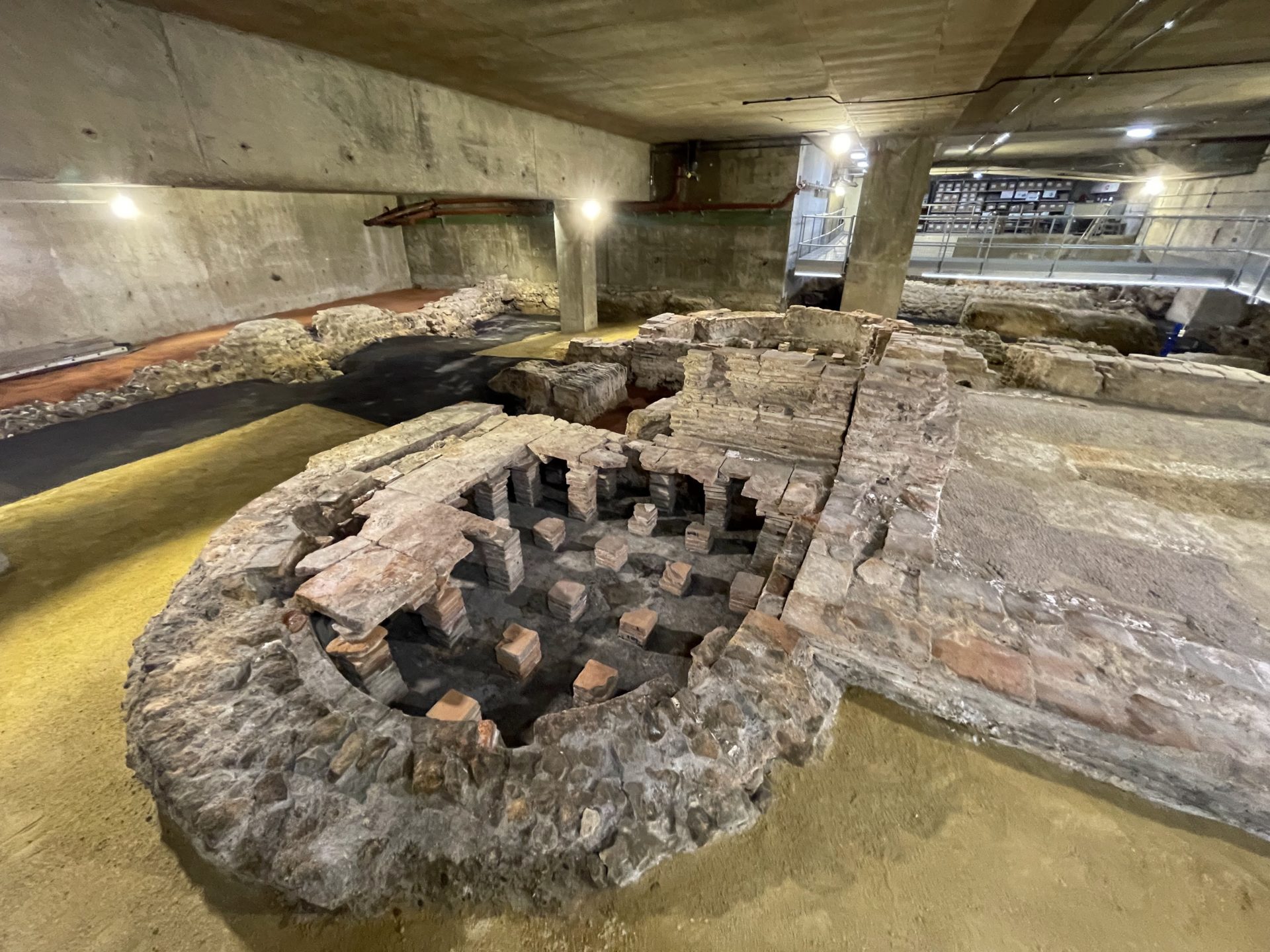This article has partner links that I may receive compensation from at no cost to you. Thank you for supporting my site by using them!
Underneath a nondescript office block in central London, not far from the River Thames, lies a hidden portal into London’s extensive past. Some two thousand years ago, Romans ruled what was then known as Londinium. As the Roman Empire shrank, the Romans left their remarkable architecture behind. While much of it has been understandably lost to time, there are still a few sites around London where you can see Roman ruins. One of the most impressive is the Billingsgate Roman House & Baths.
Access to the Billingsgate Roman House & Baths is limited to Saturday tours that are only offered from April to November. Tickets are 10 pounds & include a full guided tour that lasts about 45 minutes or so. Since there are only around 20 people per tour, tickets go fast & can be booked here.
Aside from the poster in the window, there’s nothing about this building that would indicate that it incorporates architecture that is over 2,000 years old.
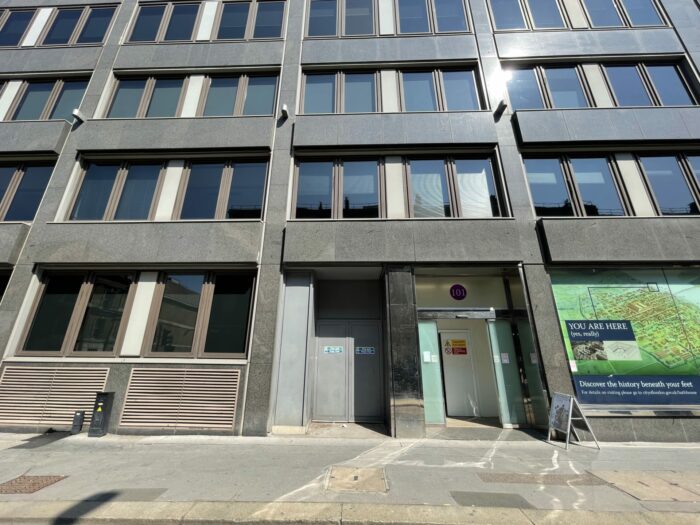
After a brief introduction to the site & the Roman history of London, our tour guide Rebecca led us to the ruins, which are located down a staircase just a floor below.
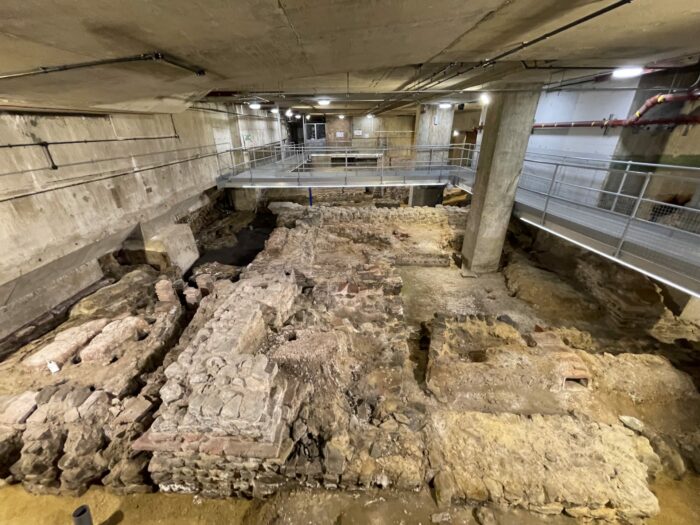
The Romans first invaded what is now England in 43 AD & established Londinium in 47 AD. It’s estimated that this property was constructed around 150 AD as a private bath. At that time, it was located right on the banks of the Thames. The river used to be broader & shallower before being reshaped to its current state. While there’s some debate about Billingsgate being a private bath given the size of the property (Was it a private bath for a rich family? An inn? A brothel?), that’s just one of the many unanswered questions about Roman life in London.
Book your hotel in London now!Around the 5th century, the Romans were gone. The Anglo-Saxons who later lived in the area tended to avoid Roman ruins, though an Anglo-Saxon brooch was found on the site. It’s remarkable that despite over 1500 years of vacancy, these Roman baths have managed to survive as the only domestic Roman property you can see in London. It’s also the only Roman site preserved in situ.
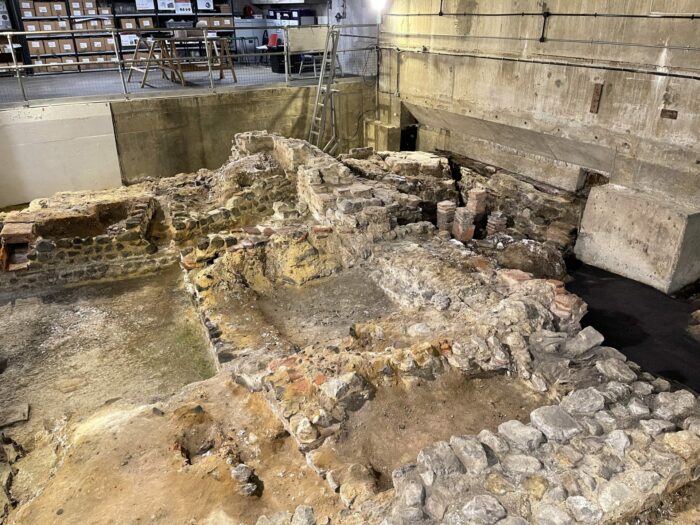
The Billingsgate Baths were discovered in 1868 during the construction of a coal exchange. It was at this time that the tepidarium section of the bath was discovered.
Following the opening of the coal exchange, the Roman ruins remained hidden out of sight for another 100 years. In 1968, the city wanted to demolish the coal exchange to widen the streets for cars. It was at this time that the rest of the Roman house was discovered. Seeing the significance of the property, it was thankfully saved, with a modern office building eventually going up above it. While the support columns do interrupt the site a bit, care was made to protect the ruins below as well as they could.
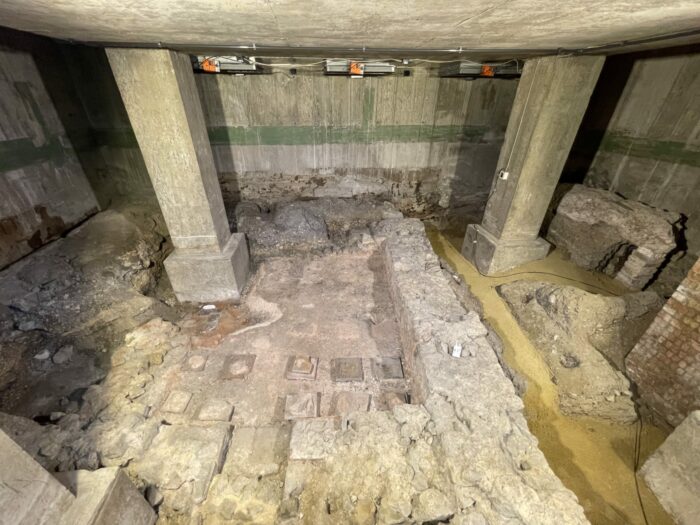
Near the beginning of the tour, you can see a model of what the London Roman House & Baths likely looked like. While just the foundations & some floor elements remain, archaeologists & historians can estimate the whole structure based on other Roman architecture. The model is helpful, as you can easily see the outlines of the foundations of each section.


The Billingsgate Roman House & Baths is a working archaeological site. The room contains not just the site but also boxes of items found on the dig so far. They have found everything from everyday items to animal prints to coins to hair.
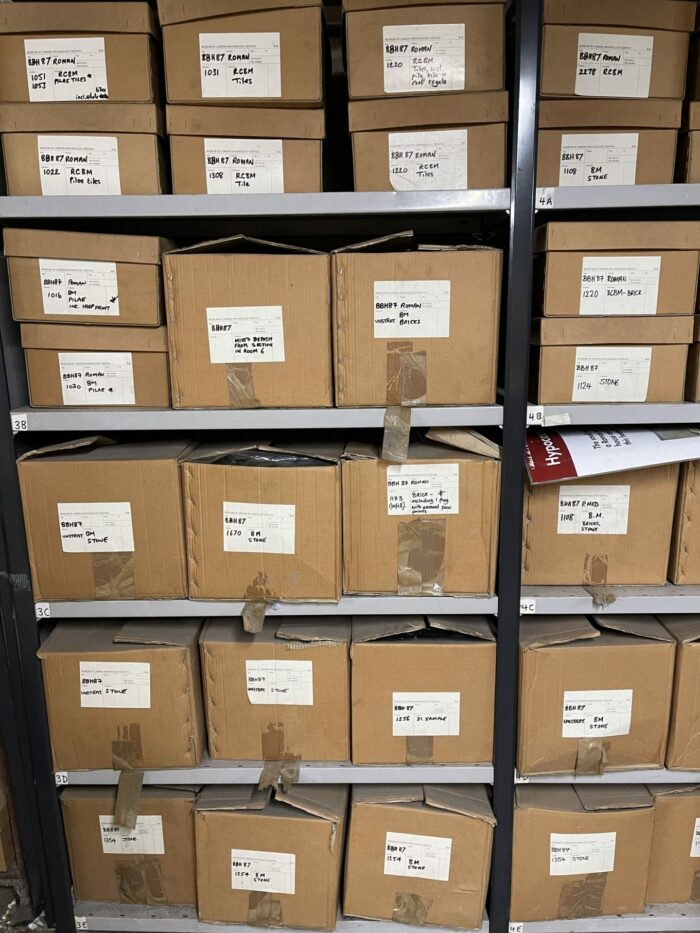
At the edge of the baths, you can see an outer wall that would have had a street outside. Here the stone is notably faced, rounded off to look better for passers-by.
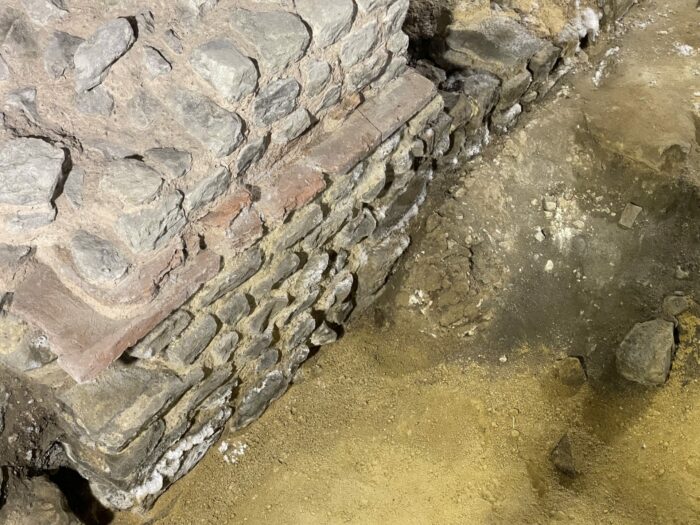
Looking inside the walls, you can also see the ducts where warm gas flowed through heated floors & heated walls – remarkable for 2000 years ago.
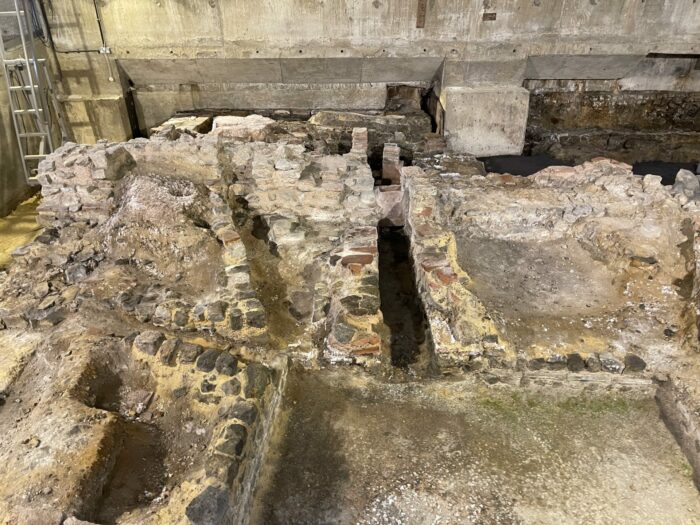
In the second section of the London Roman baths, you can see more intact tile floors. There are also seats for where people would sit in the baths.

The Billingsgate Roman House & Baths provide a unique look into early life in Roman London. While a visit does take some planning ahead, it can be combined with other historic spots for an interesting afternoon of Roman architecture in London. Nearby, you can also visit the Roman amphitheater at Guildhall and the London Mithraeum.
Here are some great London tours & activities & other things to see & do in London.
If you’re looking for a place to stay in London, check out these London hotels.

